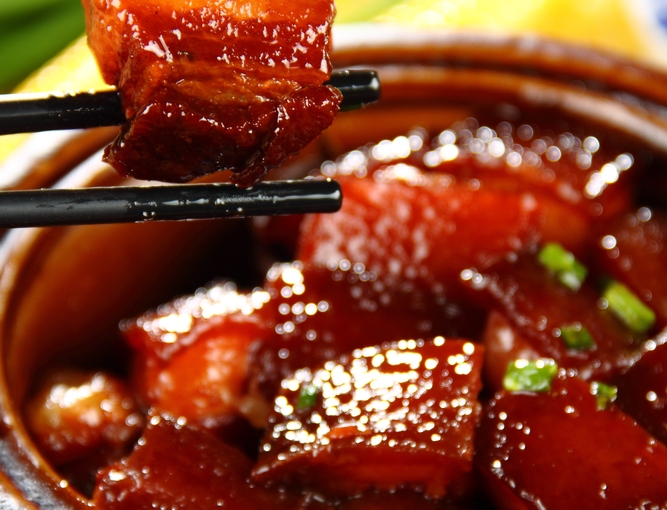
Strictly speaking, these aren’t, of course, only for lunchtime; you can have them whenever you want. In fact, they’re particularly effective after a heavy night – or so I’ve been told. In fact, the recipe they’re based on is Nigella’s Drunken Noodles – not that I’m assuming that La Lawson would indulge in too many nights where she needs an appropriate cure but…now, I’m digging that hole deeper!
I like these because they’re quick and easy to whip up from ingredients that you probably have lying around from other meals, and leftovers that could be in the fridge. And, let’s face it when you’re on holiday you probably have better things to be doing with your time than faffing about with cooking a midday meal.
This recipe feeds 2 but will stretch to more if you throw in some veggies and cold meat. We had some leftover chicken from the roast chook the other night, plus snow peas and capsicum (peppers) that we’d used last night in a noodle soup. It, therefore, made a substantial lunch for 3. There’s no coriander in the version I cooked today because my 20-year-old daughter doesn’t eat coriander – that’s a subject for a whole other story – and, to be honest, with the snow peas it had plenty of green without it.
Speaking of which, Ms 20 – who doesn’t cook – has declared that she’ll be making this dish on those times when we’re away and she has to fend for herself. It can, therefore, adapt to a uni student’s attention to detail (and budget) and be made, in need, with garlic and ginger from a squeezy tube or a jar, and a squirt of lime from a bottle in the fridge.
Which reminds me – this is more of an idea than a recipe, so don’t get too hung up on the quantities and feel free to adjust the spicing to your taste.
What you need…
- About 1/2 a packet (around 150g) dried rice noodles – like the ones you use in pad thai.
- 3 tablespoons cold water
- 2 tablespoons oyster sauce
- 1 teaspoon sesame oil
- 2 teaspoons sunflower oil
- a chunk of ginger – peeled and grated (about 1/2 a thumb size)
- 1-2 cloves of garlic, peeled and grated
- 1 lime – zested and juiced
- 1 teaspoon dried chilli flakes
- 4 tablespoons soy sauce (I like ordinary soy sauce, but hubby likes the colour you get from the dark soy sauce)
- a wok or frypan and a burner
What you do with it…
- Soak the rice noodles in hot water for about 8 minutes and then immediately refresh in cold water and allow to drain in a colander.
- While the noodles are soaking:
- Grate your ginger, garlic and lime zest and set aside
- If you’re adding extra meat or veggies toss them about in a frypan and some oil and set aside.
- Have on standby something to toss your noodles with – a spoon in each hand works.
- Mix the oyster sauce and water together and set aside.
- When your noodles are done, you can start cooking. Heat the oils in your wok or pan and add the ginger, garlic and lime zest. Sprinkle over the chilli flakes and stir well.
- Tip in the drained rice noodles and mix everything together – you’ll need to work quite quickly.
- Add the watery oyster sauce, soy sauce and about 1/2 of the lime juice (I use a whole lime because I really like the zesty hit of the lime).
- If you’re using additional veggies and meat, add this now. If not, serve immediately.
- Have some extra soy sauce close to hand – and additional chilli flakes or sriracha for people (like me) who want even more chilli.





























